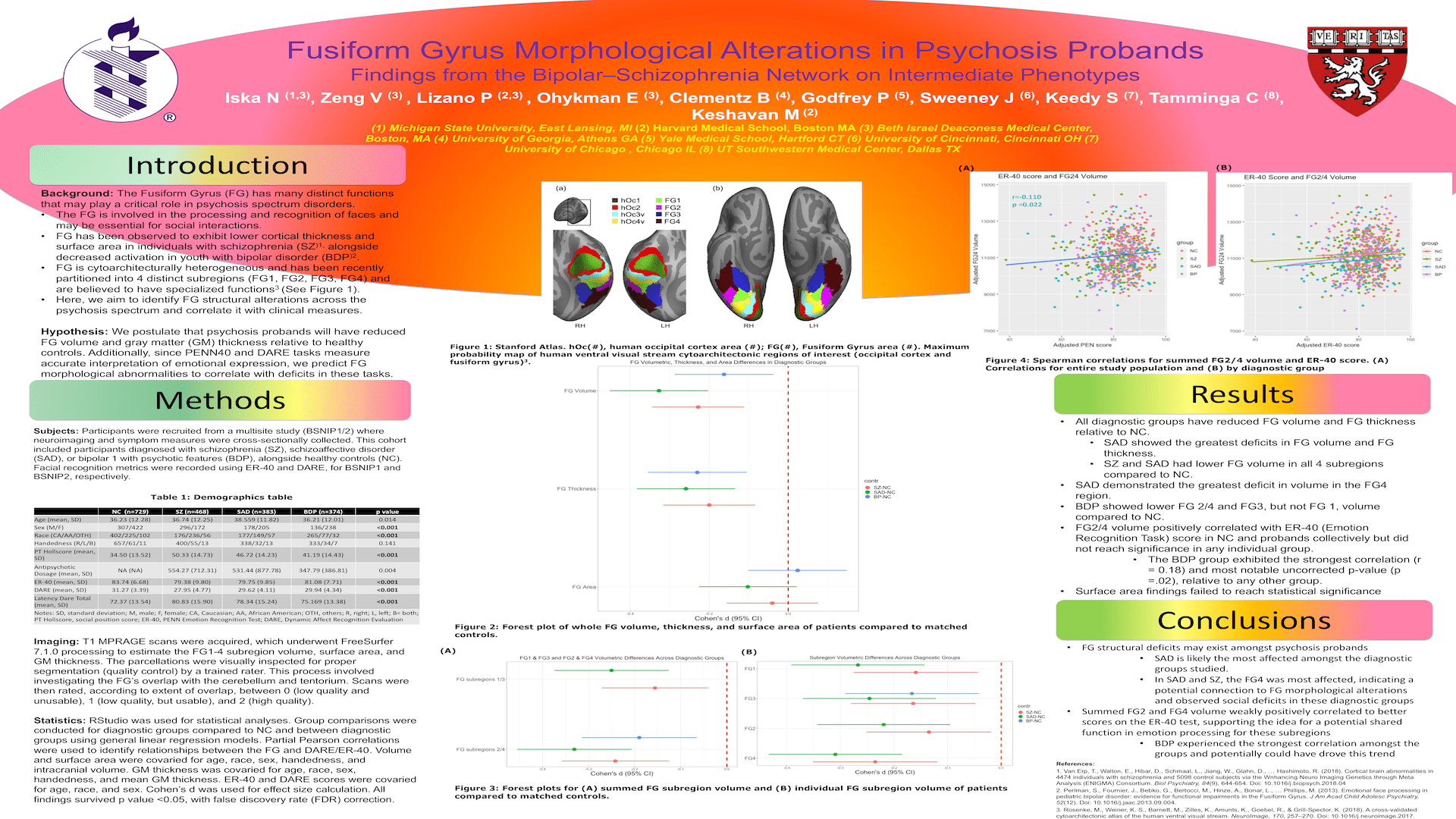Scientific Abstract
Background: The Fusiform Gyrus (FG) has many distinct functions and could be implicated in psychosis spectrum disorders. Previously, the FG was observed to exhibit lower cortical thickness and surface area in individuals with schizophrenia (SZ) and decreased activation in youth with bipolar disorder (BDP). Recently, the cytoarchitecturally heterogeneous region has been partitioned into 4 distinct subregions (FG1, FG2, FG3, FG4), that are believed to have specialized functions. Here, we aim to contribute to the sparse literature on the FG by identifying structural alterations and correlating these findings with emotion recognition performance.
Methods: T1 MPRAGE scans underwent FreeSurfer 7.1.0 processing to estimate volume, surface area, and GM thickness in healthy controls (NC=729) and psychosis probands (SZ=468, SAD=383, BP=374). Facial and emotion recognition metrics were recorded using ER-40 and DARE, for BSNIP1 and BSNIP2, respectively. P<0.05 adjusted for FDR were reported.
Results: Significant differences in volume were observed in the entire FG for SZ (p<0.001), SAD (p<0.001), and BDP (p=0.002), relative to NC. Similarly, significant differences in thickness were observed in SZ (p<.001), SAD (p<.001), and BDP (p<.001) compared to NC. SAD individuals showed the greatest deficits in both volume (95% CI= -0.33) and thickness (95% CI= -0.26). Additionally, the summed volume of FG2/FG4 positively correlated ER-40 scores within all participants (r=0.110), but failed to reach significance in any individual group.
Conclusions: FG structural deficits may exist amongst psychosis probands, and SAD is likely the most affected amongst the diagnostic groups studied. In SAD and SZ, groups FG4, a subregion implicated in face processing, was most affected; indicating a potential connection to observed social deficits in these diagnostic groups. Additionally, FG2/FG4 volumes weakly correlated with higher scores on the ER-40 test, further supporting the subregions’ proposed involvement in face processing. Interestingly, while failing to reach significance, BDP experienced.
Search posters

